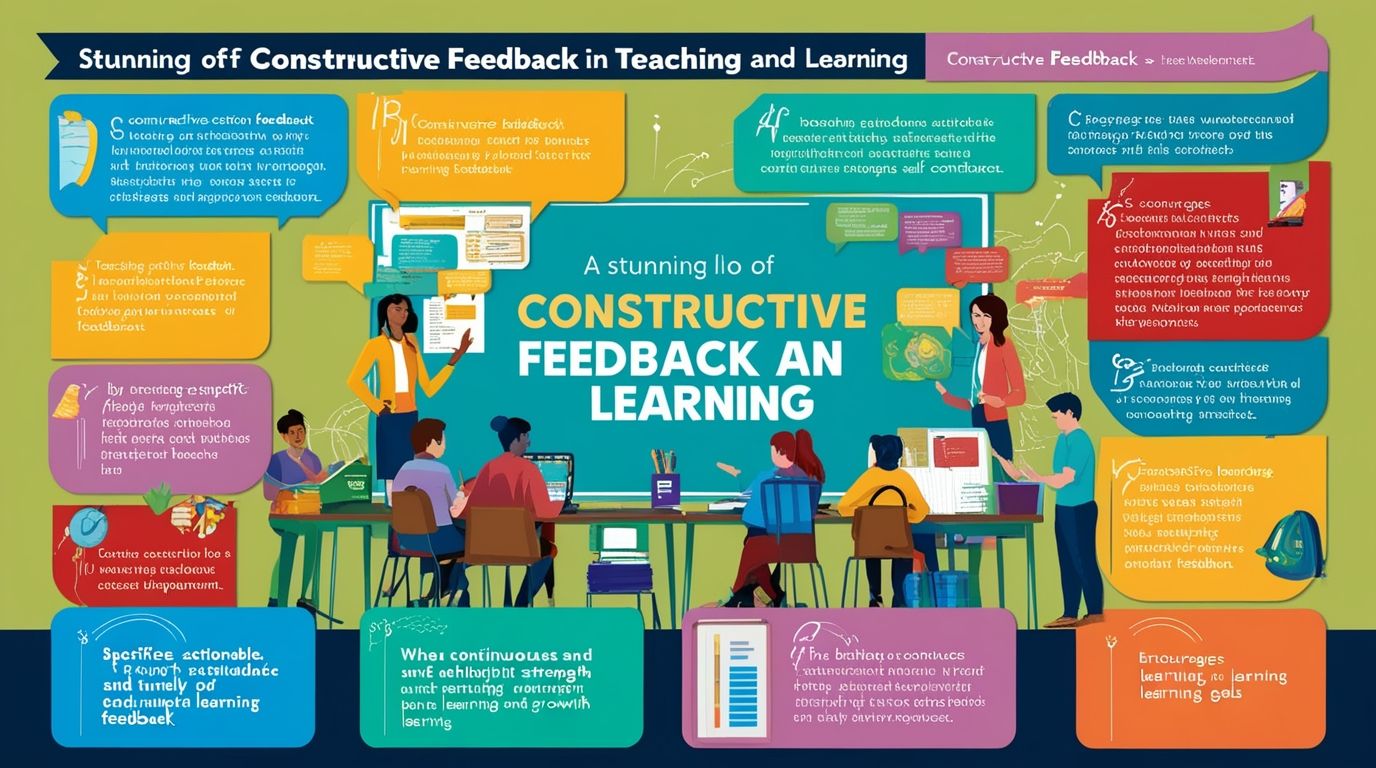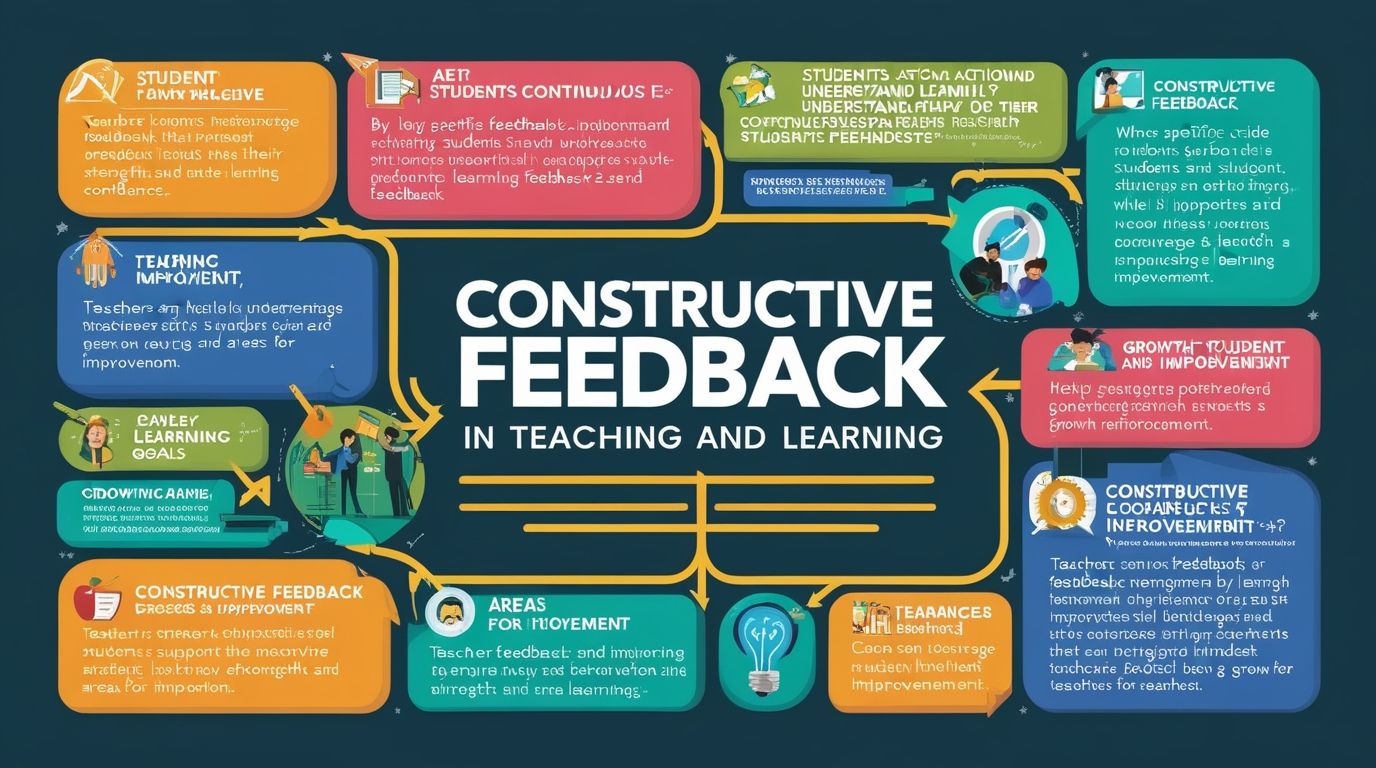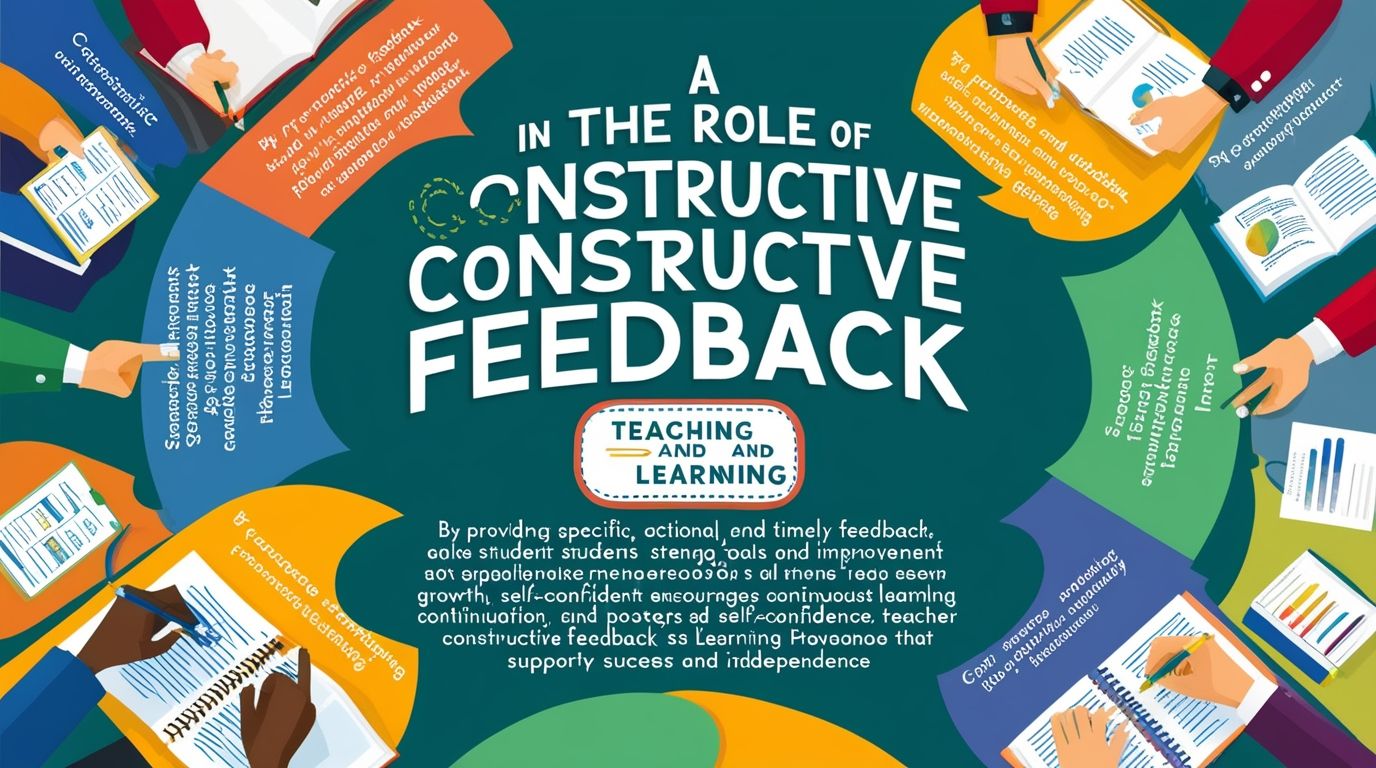Introduction
The Role of Constructive Feedback in Teaching and Learning, In education, feedback is a crucial component of the teaching and learning process. It provides students with valuable insights into their performance and offers guidance on how they can improve. Among the various types of feedback, constructive feedback stands out as an essential tool for both motivating and informing learners. Constructive feedback not only highlights areas for improvement but also reinforces students’ strengths. It creates a supportive learning environment where mistakes are seen as opportunities for growth. This article explores the role of constructive feedback in teaching and learning, its impact on student achievement, and strategies for effective implementation.
The Importance of Feedback in Education
Feedback serves as a bridge between teaching and learning. It communicates information about students’ performance, helping them understand their progress in relation to learning objectives. The primary purpose of feedback is to reduce the gap between a learner’s current performance and the desired learning outcomes. Without feedback, students may remain unaware of their mistakes, misconceptions, or areas where they need to improve. Furthermore, they may also fail to recognize their strengths, which could limit their motivation to continue excelling.
Effective feedback contributes to various aspects of learning:
- Increases Student Engagement: When students receive timely, relevant feedback, they are more likely to engage with their learning tasks. They understand where they stand and what actions they need to take to improve.
- Supports Self-Regulation: Feedback helps students reflect on their learning process, develop self-awareness, and adjust their strategies accordingly. This self-regulation fosters independence and long-term academic success.
- Encourages Growth Mindset: Constructive feedback encourages students to see challenges as learning opportunities rather than failures. It reinforces the idea that abilities can be developed through effort and practice.
- Enhances Performance: By identifying specific areas for improvement, feedback allows students to focus their efforts on key learning objectives. It serves as a guide for targeted practice, which ultimately improves their academic performance.
What is Constructive Feedback?
Constructive feedback refers to feedback that is specific, actionable, and focused on helping the learner improve. Unlike destructive criticism, which can demoralize students, constructive feedback emphasizes positive reinforcement while providing clear guidance on how to overcome weaknesses. Key characteristics of constructive feedback include:
- Clarity: The feedback must be clear and easy to understand. Vague comments like “good job” or “needs improvement” do not offer students meaningful insights into their performance.
- Actionable: It should provide specific suggestions for improvement that the student can act upon. For instance, rather than saying “your essay needs more detail,” a more constructive approach would be, “Add more examples to support your argument in the third paragraph.”
- Timeliness: Feedback is most effective when given promptly. Delayed feedback may lose its relevance, as students may have moved on to new topics or forgotten the details of their performance.
- Balance: Constructive feedback balances praise with criticism. It highlights what students are doing well while identifying areas for improvement. This balance helps maintain students’ motivation and self-confidence.

The Role of Constructive Feedback in Teaching
Promotes Continuous Learning
Constructive feedback is essential in promoting a culture of continuous learning. Rather than viewing assessments or assignments as end goals, students are encouraged to see them as part of an ongoing process. When teachers provide constructive feedback, they signal to students that learning is not about achieving perfection but about improving and refining their skills over time.
For example, in writing classes, a teacher might provide feedback on a draft of a student’s essay, pointing out strong arguments while suggesting areas where the analysis could be deepened. The student can then revise their work, incorporating the teacher’s feedback, and submit a stronger final product. This iterative process fosters a deeper understanding of the subject matter and improves students’ writing skills.
Supports Differentiated Instruction
Constructive feedback allows teachers to tailor their instruction to meet the individual needs of their students. In any classroom, students have varying abilities and learning styles. By providing personalized feedback, teachers can address each student’s specific strengths and weaknesses, guiding them toward improvement. This differentiation helps ensure that all students, regardless of their starting point, can make progress.
For instance, a student who struggles with math might benefit from feedback that breaks down complex problems into smaller, more manageable steps. In contrast, a more advanced student may receive feedback that challenges them to tackle more difficult problems or explore alternative methods of solving equations.
Encourages Reflection and Metacognition
Metacognition refers to the ability to think about one’s own thinking processes. Constructive feedback encourages students to engage in metacognitive reflection by prompting them to analyze their performance, consider alternative approaches, and make adjustments. This reflective practice is essential for developing lifelong learners who are capable of adapting to new challenges.
When teachers provide feedback that asks questions like “What strategies did you use to solve this problem?” or “How might you approach this differently next time?” they encourage students to think critically about their own learning. This process of reflection not only improves immediate performance but also helps students develop problem-solving skills that they can apply in future situations.
Builds a Positive Learning Environment
A classroom culture built on constructive feedback is one where students feel safe to take risks and make mistakes. When students know that their efforts will be met with guidance and support rather than harsh criticism, they are more likely to experiment with new ideas, ask questions, and actively participate in class discussions.
Constructive feedback also helps build trust between teachers and students. When students see that their teacher is invested in their improvement and genuinely wants to help them succeed, they are more likely to seek out feedback and be open to making changes.
The Role of Constructive Feedback in Learning
Enhances Motivation
Feedback that is specific, positive, and actionable can significantly enhance student motivation. When students receive feedback that acknowledges their efforts and guides them toward improvement, they are more likely to feel a sense of accomplishment and be motivated to continue learning. In contrast, feedback that is overly negative or vague can discourage students and diminish their motivation.
For example, a teacher might say, “You did a great job organizing your ideas in this essay. To make it even stronger, try adding more evidence to support your main points.” This type of feedback acknowledges the student’s effort while providing a clear path for improvement, which can boost their confidence and motivation.
Improves Student Achievement
Research shows that constructive feedback has a direct impact on student achievement. When students receive specific, targeted feedback, they are more likely to make meaningful improvements in their performance. In fact, studies have found that feedback is one of the most powerful influences on student learning, with a greater effect than other instructional strategies.
By providing feedback that focuses on specific aspects of student work (e.g., organization, clarity, accuracy), teachers help students understand where they need to focus their efforts. This targeted approach ensures that students are working on the areas that will have the most significant impact on their learning outcomes.
Fosters Independence and Self-Confidence
Constructive feedback helps students become more independent learners by teaching them how to self-assess and set goals for improvement. Over time, students learn to internalize the feedback they receive, applying it to future tasks without relying solely on external input. This autonomy is essential for lifelong learning and academic success.
Moreover, constructive feedback builds self-confidence by helping students recognize their strengths and develop a growth mindset. When students see that they can improve through effort and practice, they become more confident in their ability to tackle new challenges.

Strategies for Providing Effective Constructive Feedback
- Be Specific and Focused
Effective feedback should be focused on specific aspects of student performance rather than general comments. Teachers should avoid vague statements like “good work” or “needs improvement” and instead provide detailed feedback that identifies strengths and areas for improvement.
- Use Positive Language
Feedback should be framed positively, even when addressing areas for improvement. Rather than saying, “You didn’t follow the instructions,” a teacher might say, “Your work could be even better if you included all the required elements.”
- Provide Feedback in a Timely Manner
Timely feedback is critical for reinforcing learning. The closer feedback is to the learning activity, the more relevant and useful it is for students. Delayed feedback may lose its impact, as students might have already moved on to other tasks.
- Encourage Dialogue
Feedback should be a two-way process. Teachers should encourage students to ask questions, seek clarification, and engage in discussions about their feedback. This dialogue promotes deeper understanding and allows students to take ownership of their learning.
Conclusion
Constructive feedback plays an indispensable role in the teaching and learning process. It serves as a powerful tool for improving student achievement, fostering self-regulation, and building a positive learning environment. When implemented effectively, constructive feedback motivates students, enhances their academic performance, and helps them develop the skills needed for lifelong learning. By providing clear, actionable, and timely feedback, teachers can create a classroom culture where every student has the opportunity to grow and succeed.
References:
- Hattie, J., & Timperley, H. (2007). The Power of Feedback. Review of Educational Research.
- Brookhart, S. M. (2017). How to Give Effective Feedback to Your Students. ASCD.
- Shute, V. J. (2008). Focus on Formative Feedback. Review of Educational Research.
- Nicol, D. J., & Macfarlane-Dick, D. (2006). Formative Assessment and Self-Regulated Learning: A Model and Seven Principles of Good Feedback Practice. Studies in Higher Education.

7 thoughts on “The Role of Constructive Feedback in Teaching and Learning”
Comments are closed.